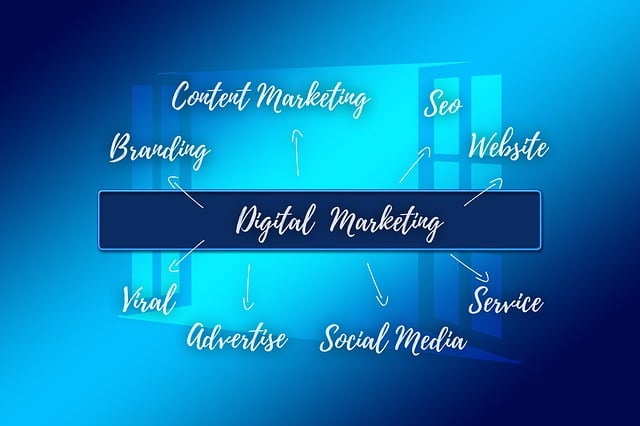Understanding user intent is paramount for successful SEO Ranking Strategies. Search engines analyze keyword usage, context clues, and implicit signals to provide relevant results, enhancing user satisfaction and website credibility. Key aspects include:
Keyword Research: Identifying search trends and user needs (informational, navigational, transactional) to create targeted content.
Content Optimization: Aligning web content with user intents, incorporating keywords naturally, and using structured data markup for better indexing.
On-Page Elements: Optimizing meta titles, descriptions, header tags, and image alt tags for improved crawlability and user engagement.
Technical SEO: Ensuring site architecture, navigation, and page speed are optimized for seamless user experiences.
Backlinks & User Engagement: Building backlinks from reputable sources and tracking user metrics like CTR, time on page, and bounce rates to signal content quality to search engines.
Performance Measurement: Regularly analyzing ranking data and user behavior to refine SEO strategies and boost online visibility.
In the dynamic landscape of digital marketing, understanding user intent is the linchpin of successful SEO strategies. This article delves into powerful SEO ranking strategies focused on user intent, exploring how search engines interpret queries and deliver relevant results. From deciphering informational, navigational, and transactional intents to optimizing content and technical SEO, we’ll guide you through proven techniques to enhance user experience and climb search engine ranks.
Understanding User Intent: The Cornerstone of Effective SEO

Understanding user intent is paramount in today’s digital era, serving as the cornerstone of effective search engine optimization (SEO) strategies. SEO ranking strategies are not merely about optimizing content for keywords; they revolve around deciphering what users truly seek when they conduct online searches. By aligning web content with the underlying intent behind user queries, search engines can provide more relevant results, boosting user satisfaction and website credibility in turn.
This involves delving into the nuances of keyword usage, context clues, and even implicit signals from searchers. For instance, a user searching for “best hiking boots” intends to make a purchase, while another looking for “how to choose hiking boots” is seeking informational guidance. SEO experts must interpret these intentions accurately, ensuring that ranking strategies cater to the diverse needs of users, thereby enhancing overall online experiences and driving better search engine rankings.
Keyword Research and User Intent: Unlocking Searcher Needs

Keyword research is a cornerstone of effective SEO ranking strategies, and it plays a pivotal role in understanding user intent. By delving into search trends and analyzing user queries, businesses can unlock valuable insights into what their target audience truly wants and needs. Each search query carries an intent behind it—whether informational, navigational, or transactional. For example, someone searching for “best coffee makers” likely intends to purchase a new device, while a user asking “how to make espresso at home” seeks information.
Marketers can use this knowledge to create content that directly addresses user needs. Incorporating relevant keywords into well-crafted content not only satisfies search engine algorithms but also enhances the user experience. This strategy ensures that when users type in their queries, the website’s relevance matches their intent, leading to higher rankings and increased engagement.
Types of User Intents: Informational, Navigational, Transactional

In the realm of SEO Ranking Strategies, understanding user intents is key to optimizing search engine results. User intents represent the underlying purpose behind a user’s search query, ranging from seeking information, navigating to specific websites, to completing a transaction. Recognizing these distinct intents allows search engines to deliver more relevant and satisfying results, thereby enhancing user experience and driving higher rankings.
Informational intent revolves around users’ quests for knowledge or answers to their queries. Navigational intent, on the other hand, is when individuals seek to visit a particular website or brand. Transactional intent involves users aiming to purchase products or services, making it critical for businesses to tailor content accordingly. By aligning web content with these user intents, SEO strategies can effectively capture searcher motives, leading to better rankings and increased online visibility.
Optimizing Content for Different User Intents

In the realm of SEO Ranking Strategies, understanding user intents is key to crafting effective content. Different search queries reflect distinct user needs—whether informational, navigational, or transactional. Optimizing content to align with these intents ensures it meets user expectations and encourages longer engagement. For instance, providing detailed explanations for informational queries enhances user satisfaction, while well-structured product pages cater to transactional searches by offering clear purchase options.
Content creators should tailor their approach based on user intent. Incorporating relevant keywords naturally within the text helps search engines understand the content’s focus. Additionally, using structured data markup enables engines to extract critical information, leading to more accurate results. By aligning content strategy with user intents, websites can significantly improve their SEO performance and attract the right audience.
On-Page SEO Techniques to Enhance User Experience

Optimizing on-page elements is a powerful SEO ranking strategy that directly enhances user experience. By focusing on keywords, content quality, and structural optimization, search engines can better understand your page’s purpose and relevance to users’ queries. Well-crafted meta titles and descriptions, for instance, not only improve click-through rates but also guide users on what to expect from the page. Additionally, utilizing header tags effectively, creating engaging and informative content, and incorporating relevant keywords naturally throughout the text all contribute to a positive user experience. These techniques not only make your pages more appealing to visitors but also encourage longer engagement, reducing bounce rates.
Moreover, on-page SEO involves optimizing images with alt tags, ensuring mobile responsiveness, and implementing structured data markup. These practices enable search engines to index your content accurately, leading to better visibility in search results. When users find what they’re looking for quickly and easily, it signals to search algorithms that your page provides value, thereby boosting your site’s SEO ranking strategies over time.
Technical SEO Considerations for Seamless User Journeys

In the realm of SEO Ranking Strategies, Technical SEO plays a pivotal role in ensuring seamless user journeys across digital platforms. Optimizing site architecture and navigation is key; intuitive design allows users to effortlessly find relevant content, boosting their experience and reducing bounce rates. Search engine crawlers follow specific rules to index pages, so it’s crucial to implement structured data markup and XML sitemaps for better visibility. These technical elements facilitate efficient crawling and indexing, enabling search engines to understand your site’s content hierarchy accurately.
Furthermore, page speed optimization is a critical aspect that cannot be overlooked. Faster loading times significantly impact user satisfaction and are a direct factor in SEO rankings. By minimizing HTTP requests, compressing images, and leveraging browser caching, websites can deliver content promptly, encouraging visitors to explore further. This not only enhances the overall user experience but also reinforces the site’s credibility with search engines, contributing to higher rankings over time.
The Role of External Links and User Engagement Signals

In the realm of SEO Ranking Strategies, external links and user engagement signals play a pivotal role in shaping search engine algorithms’ perception of a website’s authority and relevance. External links, often referred to as backlinks, act as votes of confidence from other reputable websites. When high-quality sites link to yours, it signals to search engines that your content is valuable and trustworthy. This positive signal contributes to improved user experience, which is a key factor in modern SEO strategies.
User engagement metrics, such as click-through rates (CTR), time spent on page, bounce rate, and user interactions, provide crucial insights into the quality of your website’s content and its ability to satisfy user intent. Search engines like Google have started incorporating these engagement signals into their algorithms, rewarding sites that consistently deliver relevant, engaging content with higher rankings. By optimizing for both external links and user engagement, websites can enhance their visibility in search results, attracting more organic traffic and ultimately improving their online presence.
Measuring and Analyzing User Intent Ranking Success

Measuring and analyzing user intent ranking success is a critical component of any effective SEO ranking strategies. It involves understanding how well your website aligns with the queries and intentions behind user search terms. By utilizing tools that track click-through rates (CTRs), average position, and keyword rankings, you can gain valuable insights into which strategies are performing optimally. These metrics help identify high-performing content and areas where optimization is needed.
Regular analysis of user intent ranking data enables you to refine your SEO approach, ensuring that your website provides the most relevant and satisfying results for searchers’ queries. This iterative process involves comparing expected vs. actual performance, identifying trends, and making data-driven adjustments to improve overall search visibility and user engagement.
